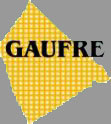GAUFRE wants to go beyond the mere result of producing a master plan for an optimal allocation of use functions. It is obvious that the project could not establish a fully mature spatial structure plan given the limited span of time. The project is therefore also putting emphasis on the methodological process towards a plan rather than the final product alone. This methodological process stresses interdisciplinarity, multifunctionality and public participation:
(1) Interdisciplinarity:
To obtain objective information underlying the knowledge module, the impact maps and the spatial structure plan, a continuous flow among natural scientists, social scientists, decision makers, stakeholders and the general public is needed. Integration of - sometimes opposite and even conflicting - interests should go beyond the specific sectors. The finetuning of both environmental as well as socio-economic goals is therefore difficult but mandatory. The GAUFRE project contributes towards interdisciplinarity both by its partnership and user committee, as well by its use of existing databases and information gathered from previous projects.
(2) Multifunctionality:
Because of its multifunctionality, layered and modular structure, it was decided to use a Geographical Information System (GIS) as the underlying methodological platform. This platform is not only an adequate tool for generating maps, but it is also able to allow spatial analysis of the data and integrate multicriteria decision support systems. This could be a way to allow the evaluation and balancing of spatial use and use intensity by different use functions for the BPNS. It has already been used in land based and sector restricted planning studies.
(3) Public participation:
The need for a continuous flow of information among natural and social scientists, economists, decision makers, stakeholders and specifically the public, and the accessibility of the outcome towards its users, asks for a thorough public participation. The use of two workshops and the continuous interaction with an extensive user committee tried to bridge this gap during the process. Extensive public interaction and participation however can only start after a preliminary proposal for a spatial structure plan has come to shape (see Long term)


